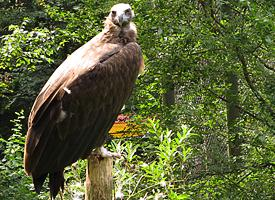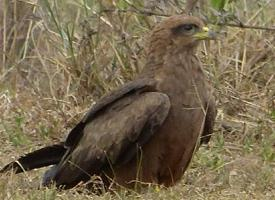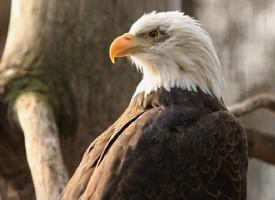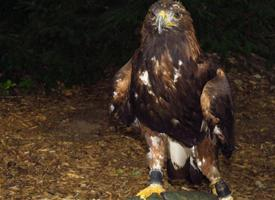
Poids et mesures
| Longueur | de 98 à 107 cm |
|---|
Description de l'animal
The Cinereous Vulture, known scientifically as Aegypius monachus, is a majestic and formidable bird of prey that is among the largest raptors in the world. This species, also commonly referred to as the black vulture, monk vulture, or Eurasian black vulture, commands attention with its impressive size, striking appearance, and powerful presence. Here is an in-depth look at this fascinating creature.Physical Description
The Cinereous Vulture is characterized by its sheer size, with a wingspan that can reach up to 3 meters (almost 10 feet), making it one of the largest flying birds. Adult birds typically weigh between 7 to 14 kilograms (15 to 31 pounds), with females generally being slightly larger than males. Their plumage is predominantly dark brown to black, with a distinctive bluish or silvery sheen on the upper parts and a ruff of lighter feathers around the neck that can appear almost mane-like. The bird's head and neck are nearly bare, with only sparse coverage of fine, downy feathers, exposing the grey to blackish skin underneath. This adaptation is thought to be a hygienic feature, minimizing feather fouling during feeding. Their beak is formidable, hooked, and powerful, perfectly designed for tearing flesh.
Habitat and Distribution
Cinereous Vultures are found across a wide range, from the Iberian Peninsula and North Africa across to Mongolia and Northern India. They inhabit a variety of landscapes, primarily frequenting mountainous regions, open plains with scattered trees and cliffs, and semi-desert areas. These birds are largely sedentary, although some populations in the colder parts of their range migrate southward to spend the winter.
Diet and Hunting
As scavengers, Cinereous Vultures feed predominantly on carrion, playing a crucial ecological role in their habitats by helping to dispose of dead animals. They have been known to consume the carcasses of a wide variety of animals, from small mammals to large ungulates. These birds have excellent eyesight, which they use to scan the ground from soaring heights in search of food. They often rely on other scavengers, such as eagles and smaller vultures, to initially open the tough skins of larger carcasses, after which they can use their powerful beaks to tear off chunks of flesh.
Behavior and Reproduction
Cinereous Vultures are generally solitary or found in pairs, although they may gather in larger groups at abundant food sources. They are monogamous, with pairs forming long-lasting bonds. Nests are built high up on cliff ledges or in large trees, where they lay a single egg. Both parents are involved in incubating the egg and feeding the chick, with the young bird fledging after about 3 to 4 months. The parental care may continue for several months thereafter until the juvenile is fully independent.
Conservation Status
The Cinereous Vulture is classified as Near Threatened by the International Union for Conservation of Nature (IUCN). While the species is widespread, its population faces threats from habitat loss, poisoning (both intentional and accidental), and disturbance at nesting sites. Conservation efforts are ongoing to protect this species, including habitat preservation, anti-poisoning campaigns, and efforts to reduce human disturbance.
In summary, the Cinereous Vulture is a remarkable bird, both in terms of its physical attributes and its role in the ecosystem. Despite the challenges it faces, ongoing conservation efforts offer hope for the future of this magnificent species.
Carte de répartition

Animaux similaires
Nouvelles photos d'animaux
Top 10 des animaux
- Dolphin gull (Leucophaeus scoresbii)
- Diana monkey (Cercopithecus diana)
- Moustached guenon (Cercopithecus cephus)
- Galápagos tortoise (Geochelone nigra complex)
- Stone loach (Barbatula barbatula)
- Japanese macaque (Macaca fuscata)
- Russian tortoise (Testudo horsfieldii)
- Greek tortoise (Testudo graeca)
- Common flying dragon (Draco volans)
- Vendace (Coregonus albula)


